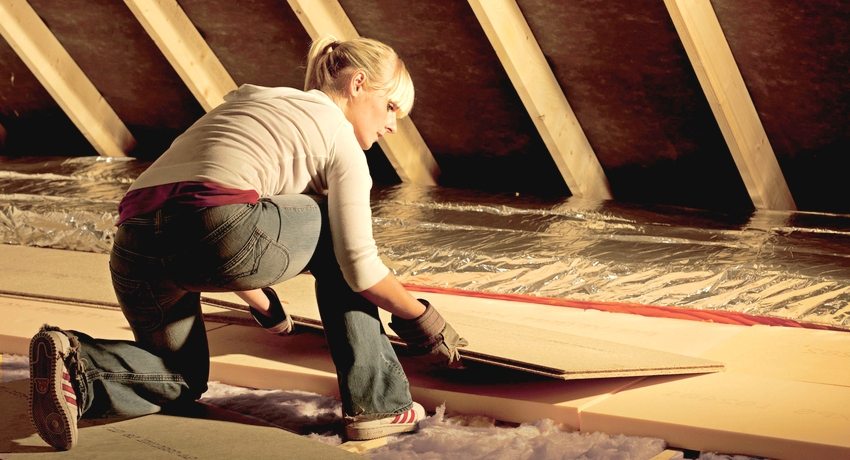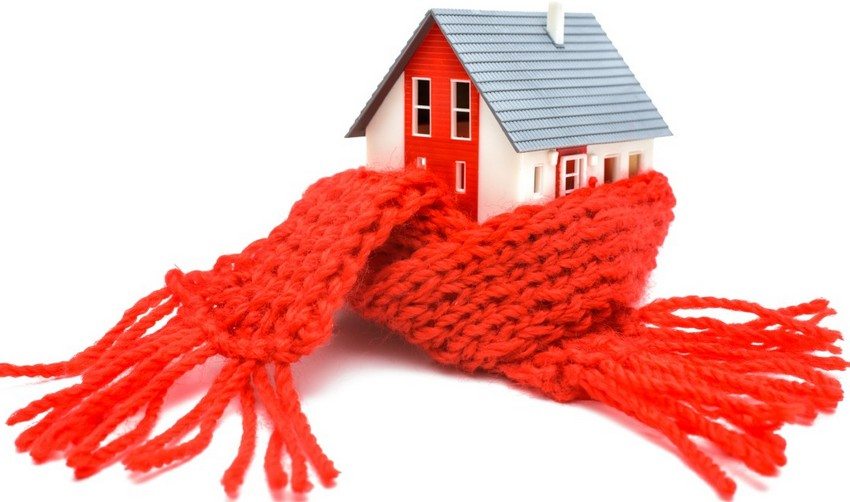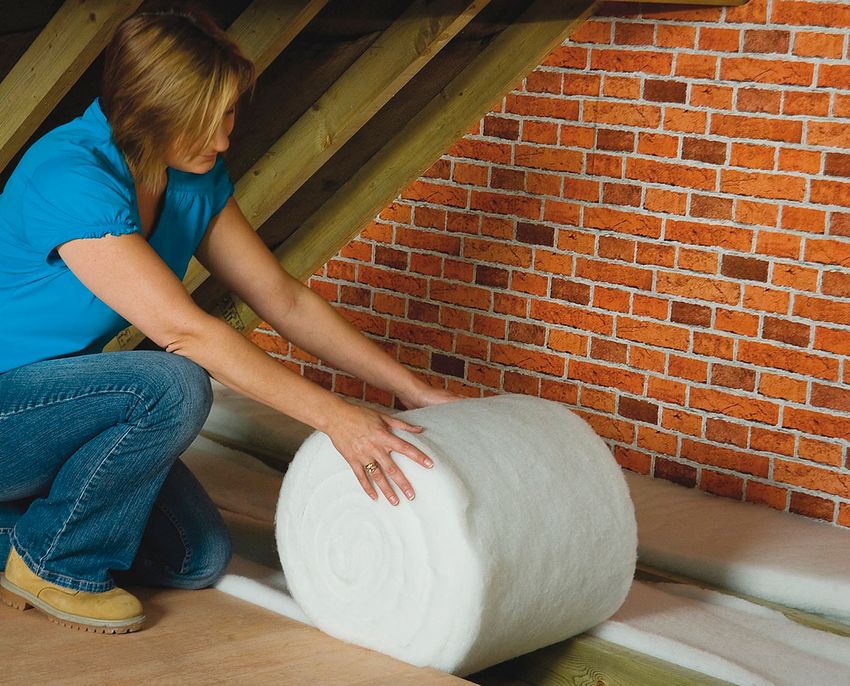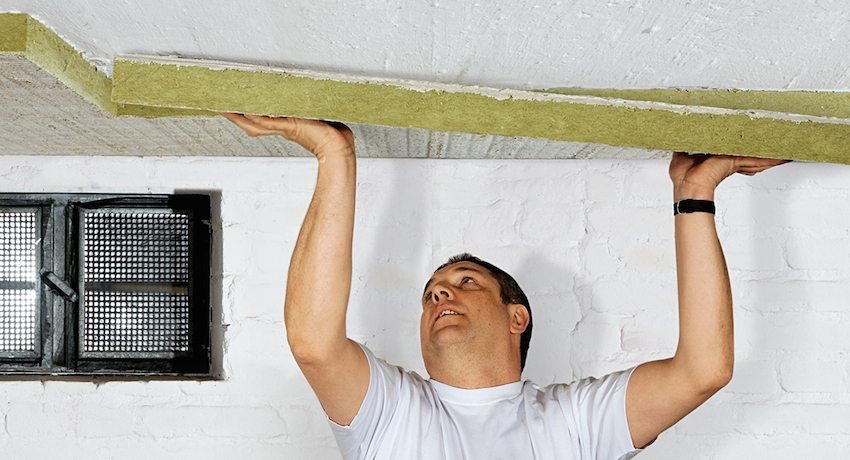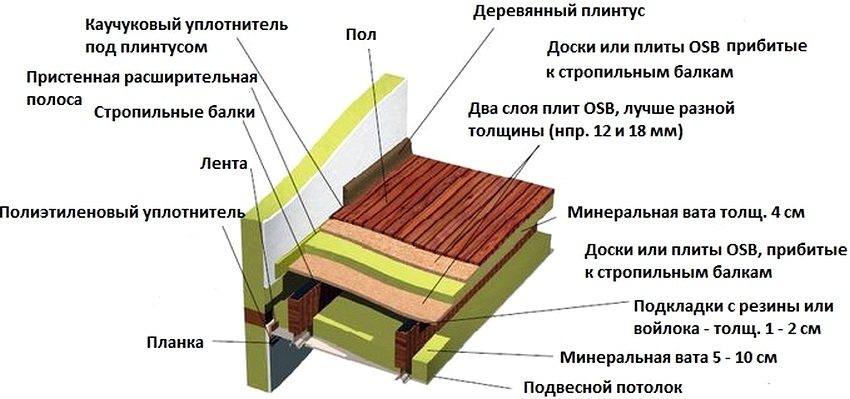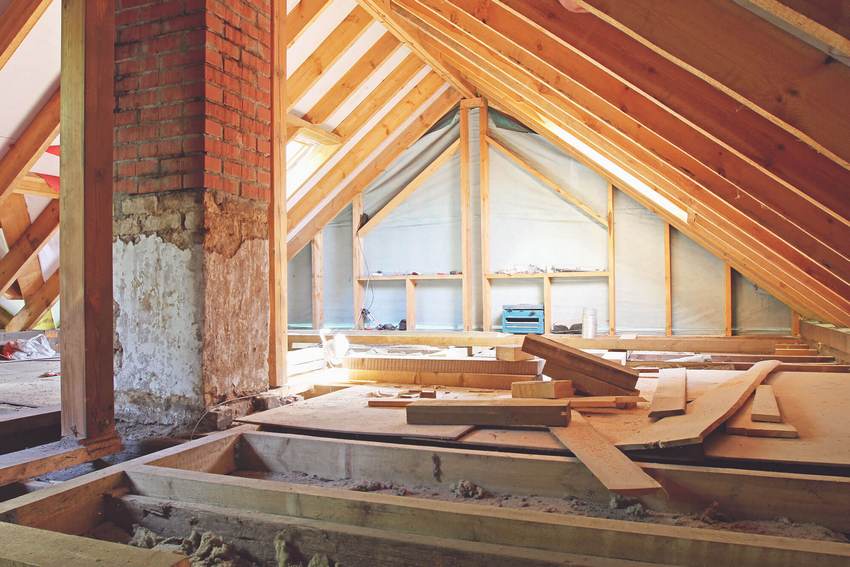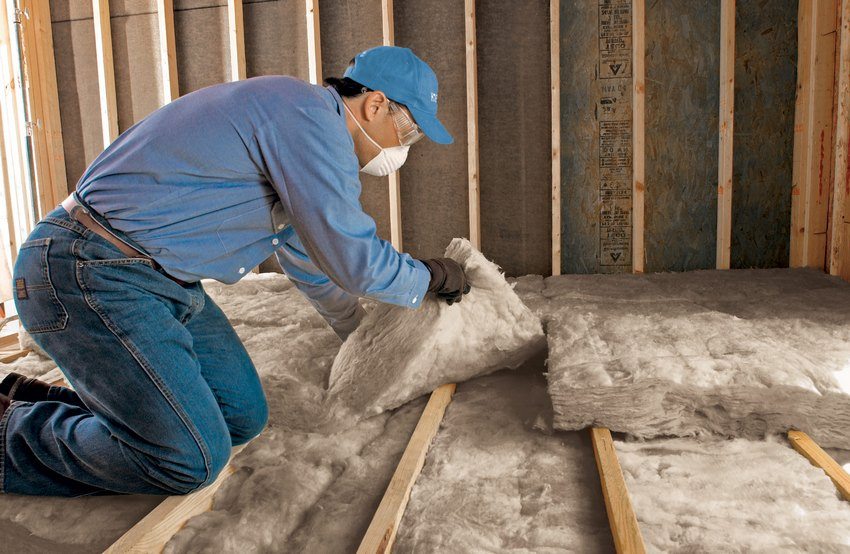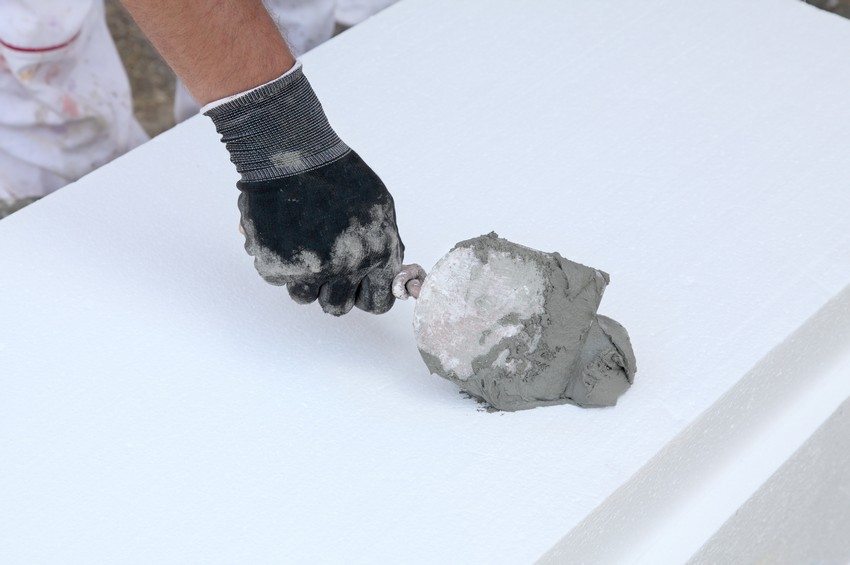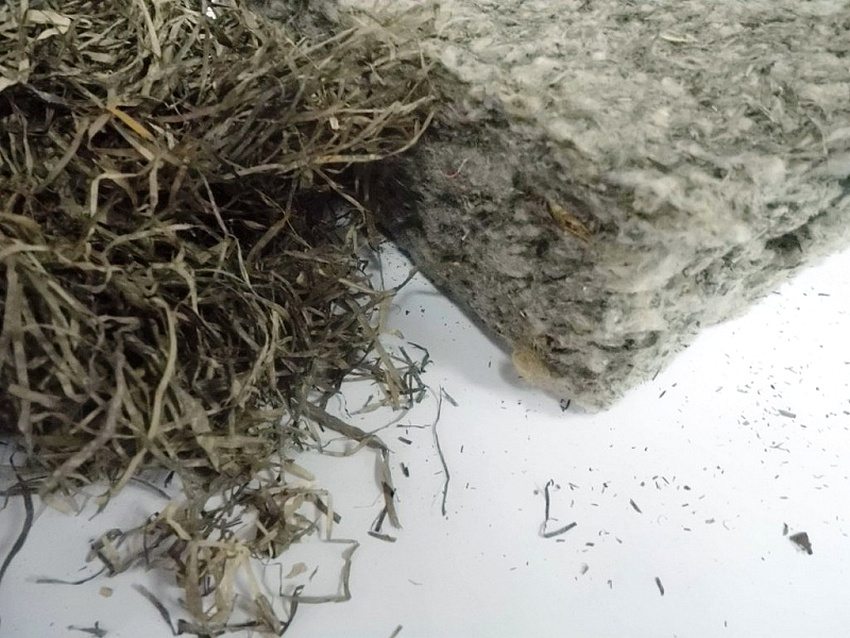Do-it-yourself ceiling insulation in a private house is not an easy question of coziness, comfort in any room, as well as significant savings on utilities. The maximum percentage of heat escapes through the ceiling, so the process of thermal insulation of this part of the house should be given special attention. The latest building materials will help you accomplish this task without any problems in two different ways - from the inside of the room or from the roof side.
Content
Choosing a way to insulate the ceiling
To choose a method of arranging insulation, it is worthwhile to conduct some analysis of the positive and negative aspects of each type. With the internal arrangement of the heat-insulating layer, it is best to opt for such a heater as mineral wool. For external thermal insulation, almost any thermal insulation material is suitable.
In determining the method, the height of the ceiling is quite important. The internal arrangement of the heat-insulating layer implies the use of suspended structures, so the height of the ceilings can decrease by at least 10 cm. But the suspended structures can correct significant irregularities in the repair, therefore, if there are differences in the floor level of more than 5 cm, it is worth trying to stop at this method.
Related article:
Do-it-yourself roof insulation from the inside, types of insulation and technology. Overview of various types of insulation and preparation for work. Roof insulation technology with sheet material, liquid foam.
The monetary side of the process is also of no small importance. Arrangement of internal insulation of the ceiling is much more expensive, because this includes the cost of work on the creation of a suspended structure, as well as additional materials for subsequent finishing. Inexpensive insulation materials can be used for the outer thermal insulation layer, such as:
- slag granules;
- expanded clay;
- ecowool;
- Styrofoam.
Important! Any insulation should not be pressed or squeezed. At the same time, it loses its properties.
The choice of how to insulate the ceiling of a private house with your own hands remains with the owner. Having weighed all the pros and cons, you can choose the ideal one for a particular room.
Ceiling insulation from the inside - the main subtleties
If you decide to insulate the ceiling from the inside on your own, then you need to know about the following important points:
- when working with mineral wool insulation, you must use protective equipment.Such materials include many fine glass particles, which are harmful to the body when inhaled, and also cause severe itching;
- for high-quality insulation of the ceiling in a private house with your own hands from the inside, you must first assemble a frame for the future suspended structure. The insulation is laid inside the assembled frame and fixed with special brackets for the profile. Now you can start plasterboarding;
- do not use a polyethylene barrier indoors. If you cover the ceiling with a film, then later you can observe the formation of fungus and mold, which will appear as black spots.
Important! When arranging insulation on the inner side of the ceiling, it is not recommended to install lamps in suspended structures.
Do-it-yourself ceiling insulation in a private house from the attic side
The easiest way to eliminate heat losses through floors is to provide thermal insulation from the attic side. To create it, you can use not only roll or matte insulation, but also loose thermal insulation material. The thicker the layer, the less loss. Most often, varieties of expanded polystyrene are used for the insulation procedure. They are light enough and perfectly able to keep warm.
Mineral wool
Insulation of the attic floor using mineral wool should consist of the following layers:
- vapor barrier;
- waterproofing;
- insulation.
The vapor barrier film prevents moisture from entering the room in the form of steam. Wet insulation loses all its qualities and can become the basis for the growth of fungus. Such a film is fixed with a stapler or tape. The strips are laid with an overlap of 10 cm.
After organizing the vapor barrier, the insulation is laid. All existing voids, hard-to-reach places are filled with them in order to avoid the appearance of cold bridges. After the end of this process, a waterproofing film is laid on the thermal insulation and, if necessary, a finishing coat.
Warming with sawdust
The lowest cost method of insulation is considered to be the ceiling insulation with sawdust. Since this material is considered fire hazardous, special technology must be observed:
- overlappings from the attic side are covered with special parchment;
- all wooden parts are treated with fire protection agents;
- prepare a mixture of sawdust, water and cement;
- fill the ceiling.
Sometimes lime or gypsum is added to the composition of such a mixture. This measure allows you to protect the material from rodents and increase the level of fire safety. The only drawbacks of thermal insulation with sawdust is considered to be the inability to use the attic space, since the resulting layer is not strong enough and is not vulnerable.
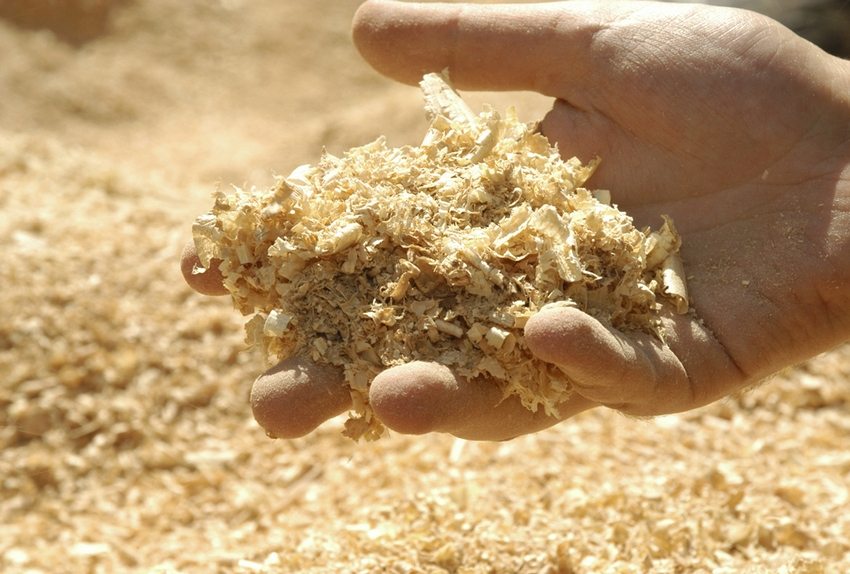
The use of sawdust or small chips is an effective and environmentally friendly way to insulate the ceiling
Foam insulation
Polyfoam is a high-quality insulation that is suitable for use both inside and from the attic. This is an inexpensive material with high thermal insulation properties. The recommended thickness of the foam board is 5 cm.Do-it-yourself work on the ceiling insulation in a private house is quite simple and includes the following steps:
- first, the ceiling is lined with a polystyrene foam backing with a foil base. It is fastened either with screws using rails, or with high-quality adhesive;
- having measured the dimensions of the ceiling, it is necessary to cut the foam plates according to the obtained figures;
- then the foam sheets are installed. All existing gaps and joints must be filled with polyurethane foam;
- if ceiling insulation was carried out indoors, you can start finishing;
- if the foam was used for thermal insulation of the attic floor, then the process can be completed at this, provided that it is not planned to use this room.
Non-standard methods of ceiling insulation
A little-known, but no less effective method of insulating a ceiling in a private house with your own hands can be called thermal insulation with reed mats. Modern slabs made of such a natural material are tied with twine or wire for strength. They are simply laid on the floors. Two-layer thermal insulation with reed mats almost completely eliminates heat loss.
For lovers of natural materials, dried seaweed is a good option for creating thermal insulation. In the coastal regions, this material is quite cheap. Small rodents do not live in it.
Insulation in the form of algae is considered medicinal, since it is saturated with salt and iodine, and the vapors of these substances have a positive effect on the health of residents. Algae is not flammable, pathogenic microorganisms and various insects do not start in them.
Since such a material is not afraid of moisture, it is not required to equip a vapor barrier. For high-quality insulation, it is necessary to lay the ladders of seaweed with a layer of about 20 cm, and for the convenience of moving along the ceiling, build a flooring of boards.
Do-it-yourself ceiling insulation in a private house is a completely simple process. A wide variety of modern materials allows you to choose the best option for creating a heat-insulating layer that will suit the owner in terms of quality and price.
